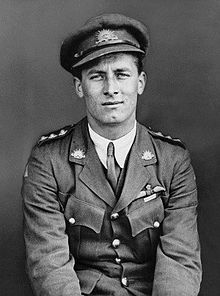Arthur Henry (Harry) Cobby | |
|---|---|
 Captain Harry Cobby in 1919 | |
| Born | 26 August 1894 Prahran, Victoria |
| Died | 11 November 1955 (aged 61) Heidelberg, Victoria |
| Allegiance | Australia |
| Service | Royal Australian Air Force |
| Years of service | 1912–1946 |
| Rank | Air Commodore |
| Unit | No. 4 Squadron AFC (1917–18) |
| Commands | No. 1 Squadron (1925–26) No. 3 Squadron (1930–31) North-Eastern Area Command (1942–43) First Tactical Air Force (1944–45) |
| Battles / wars |
|
| Awards | Commander of the Order of the British Empire Distinguished Service Order Distinguished Flying Cross & Two Bars George Medal Mentioned in Despatches Medal of Freedom (United States) |
| Other work | Department of Civil Aviation
|
Air Commodore Arthur Henry Cobby, CBE, DSO, DFC & Two Bars, GM (26 August 1894 – 11 November 1955) was an Australian military aviator. He was the leading fighter ace of the Australian Flying Corps (AFC) during World War I, despite seeing active service for less than a year.
Born and educated in Melbourne, Cobby was a bank clerk when war broke out, and was prevented by his employer from enlisting in the Australian Imperial Force until 1916. After completing flight training in England, he served on the Western Front with No. 4 Squadron AFC, operating Sopwith Camels. He was credited with 29 aerial victories, and his achievements were recognised with the Distinguished Service Order, the Distinguished Flying Cross and two bars, and a mention in despatches.
Acclaimed a national hero, Cobby transferred to the newly formed Royal Australian Air Force (RAAF) in 1921 and rose to the rank of wing commander. He left the Permanent Air Force (PAF) in 1936 to join the Civil Aviation Board, but remained in the RAAF reserve. Re-joining the PAF at the outbreak of World War II in 1939, Cobby held senior posts including Director of Recruiting and Air Officer Commanding North-Eastern Area. In 1943, he was awarded the George Medal for rescuing fellow survivors of an aircraft crash. He was appointed Air Officer Commanding No. 10 Operational Group (later Australian First Tactical Air Force) the following year, but was relieved of his post in the wake of the "Morotai Mutiny" of April 1945. Retiring from the Air Force in 1946, Cobby served with the Department of Civil Aviation until his death on Armistice Day in 1955.